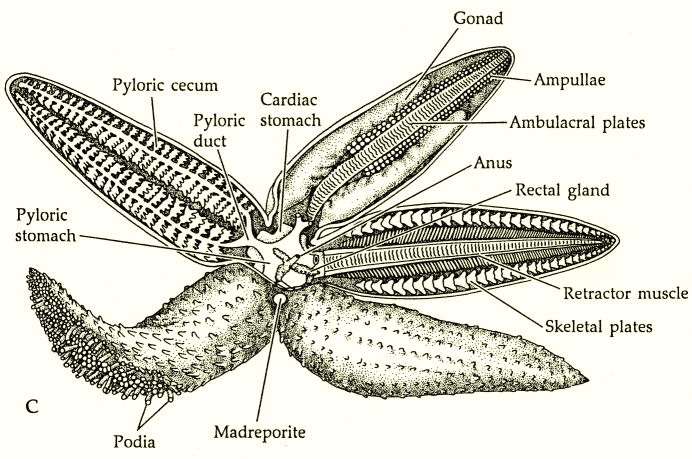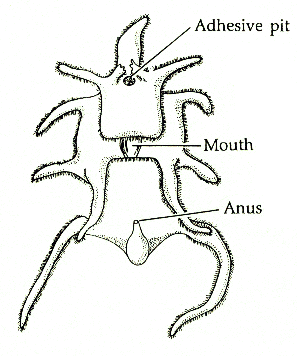Starfish Reproduction
Starfish commonly reproduce by free-spawning: releasing their
gametes into the water where they hopefully are fertilized by gametes
from the opposite sex. To increase their chances of fertilization,
starfish probably gather in groups when they are ready to spawn, use
environmental signals to coordinate timing (day length to indicate the
correct time of the year, dawn or dusk to indicate the correct time of
day), and may use chemical signals to indicate their readiness to each
other.
Fertilized eggs grow into bipinnaria and later into
brachiolaria larvae, which either grow using a yolk or by catching and
eating other plankton. In either case, they live as plankton, suspended
in the water and swimming by using beating cilia. The larvae are
bilaterally symmetric — unlike adults, they have a distinct left and
right side. Eventually, they undergo a complete metamorphosis, settle
to the bottom, and grow into adults.
|
|
|
|
|
Bipinnaria larvae of a starfish.
|
|
Brachiolaria larvae of a
starfish.
|
Some species of starfish brood their
young: the males spawn gametes which fertilize eggs held by the
females. The females may hold the eggs on their surface, in the pyloric
stomach (as in Leptasterias tenera), or even attach
them to the ground (as in Asterina gibbosa).
Brooding is especially common in polar and deep-sea species,
environments less favorable for larvae.
Male and female starfish are not distinguishable from the
outside; you need to see the gonads or be lucky enough to catch them
spawning. The gonads are located in each arm, and release gametes
through gonoducts located on the central body between the arms.

Last
updated May 10, 2000.



